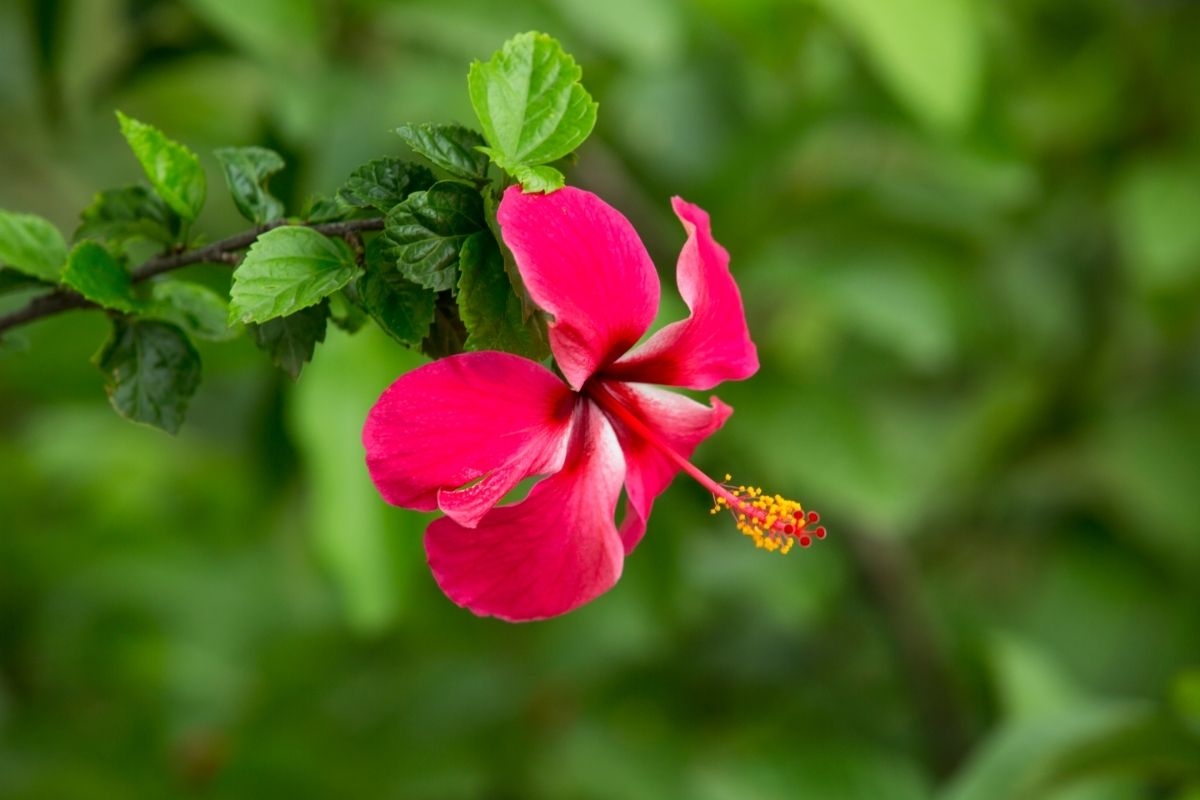
The reason many people choose to own a hosta plant is because they are perennial. This means that every year they stay looking beautiful with their leafy green foliage, especially if they are taken care of properly and not neglected.
However, this is easier said than done. A hosta can be rather challenging, and are traditionally grown outdoors, but they can also live happily and thrive indoors with the right attention.
If you are looking to own a hosta houseplant, or already own one but are wondering how to care for it properly, then you have come to the right place.
Let us take a look at how a hosta plant can survive indoors, and why they make good indoor plants.
The Hosta Plant
Before you choose a hosta plant, you will want to do your research first. This is because there are so many variations of hosta, such as the color, size, height and whether the type of hosta lives better indoors or outdoors.
Fortunately, most hosta plants are happy living either indoors or outdoors, making it a versatile plant. They can also survive pretty cold conditions, so will even look attractive during winter.
In the summer, hosta plants can bloom in various colors such as white, blue, lavender, or pink. Whilst an outdoor hosta might attract slugs, snails, rabbits and deer, your indoor plant will not.
The downside of the smell of the flowers being attracted by the likes of deer for example, means that all you will be left with is the stems due to them being eaten.
Dormant Period Of A Hosta Houseplant
Because the hosta is perennial, it will need to go dormant each year to make sure it can come back fuller in a few months time. To allow this to happen, you will need to ‘force’ it to go dormant by mimicking winter.
To do this, you will need to place your hosta houseplant in a dark and cool area of around 42 Fahrenheit or below to ensure it goes dormant.
It will need to stay there for six to twelve weeks in this consistent temperature.
Try not to change the temperature constantly, so it freezes and thaws. This is likely to damage the plant and stop it from going dormant.
Do however, make sure that the soil has not frozen, and that it is not completely dry either. You can check this once a month to make sure it is doing well.
You may notice that the leaves will begin to drop off, but this is very normal and does not mean the hosta is dying. It will bloom again once spring rolls around.
Indoor Conditions For A Hosta Plant

To have a happy hosta houseplant, you will want to make sure that the indoor conditions for your houseplant is a good environment for it to grow in.
They do need some extra love and care compared to other houseplants, but over time it will be worth it due to how much the plant thrives.
Light
Hosta plants love the shade, but many varieties do not do so well in the direct sun.
As you can probably tell, the light all depends on what type of hosta plant you own, as each one requires their own specific lighting needs.
The majority of hosta plants thrive if left in the shade, but all of them can do with a bit of light as well – though as mentioned above, always do your research to make sure your hosta plant does like light, as many are happy to just be left in the shade.
If your hosta plant does like the light, then you will want to keep it out of direct sunlight.
If you think that you have left it to sit in the sun’s rays far too many times, then there are indicators that will be able to tell you if your hosta plant is suffering. These will be in the form of brown tipped or spotted leaves.
Temperature
One of the really good things about owning a hosta houseplant is that they do not care too much about either the humidity or temperature. This can suit a lot of households due to the variations of the climate across the USA.
This also means that if you do have a hot day, they will not be too concerned about the drop of temperature at night.
Water
Watering a hosta plant is likely to be the most difficult area when it comes to owning one as an indoor houseplant, especially at the beginning.
If you water it too much, you risk root rot and extra damage. If you do not water the hosta enough, it can also damage the plant.
The ideal situation is to keep the soil moist, but not too wet, especially at the beginning of it living indoors.
Once they have gotten used to the idea of living in an indoor environment, they may not mind the odd dry spell – just do not leave it dry like you would a succulent.
Your aim will be to give the hosta around an inch of water to wet the soil, but not leave the poor plant to stand in a pool of water.
To make sure you do not overwater the hosta, stick a finger into the soil around an inch or two down. If it feels cool and damp, then it is not time to water it. If it is dry, then the hosta will need a drink.
Also, make sure you water the hosta under its leaves and never wet the plant itself. This can attract bugs into your home and onto the plant, and that is a whole other problem entirely!
Soil
Before you can even water your hosta, it will need to be living in the correct type of soil. An outdoor hosta will be living in rich soil that will not need any additions such as fertilizer, but an indoor hosta is different.
For an indoor hosta, aim to plant it in soil that drains well and has a pH range of around 6.0 to 6.5. This allows for growth, so if you find that your hosta is not growing, this could be the reason why.
Fertilizer
Speaking of fertilizer, a hosta will need it to help it to thrive indoors. When you first get a hosta, or once the dormancy period is over in the springtime, add a slow-release fertilizer to help it on its way.
You can also add a water-soluble fertilizer each week to give it an extra boost and to encourage it to grow really healthily.
Repotting A Hosta
You might find that your hosta is growing at an alarming rate – this is normal. What you will need to do however, is repot it as it will become damaged if left in a small container.
To make sure the new pot is big enough, it should be around two to three inches bigger than the previous pot to avoid the plant splitting.
You can split the plant if you would like though, as this can create extra hosta plants to put around the house.
Also, if you plan on repotting the plant, always do it in the spring after the dormant period to allow it to thrive.
Final Words
A hosta as a houseplant is a great option if you want to bring greenery into the home.
Whilst they do require extra tender loving care and can come across as fussy plants, they are actually relatively easy to look after.
So yes, a hosta plant can live indoors, and quite happily so. They just need extra looking after compared to hosta plants which live outdoors.
- Best Hanging Plant For Low Light - September 4, 2023
- Best Indoor Plants Florida - August 28, 2023
- Best Plants For Bathroom Smells - August 21, 2023








